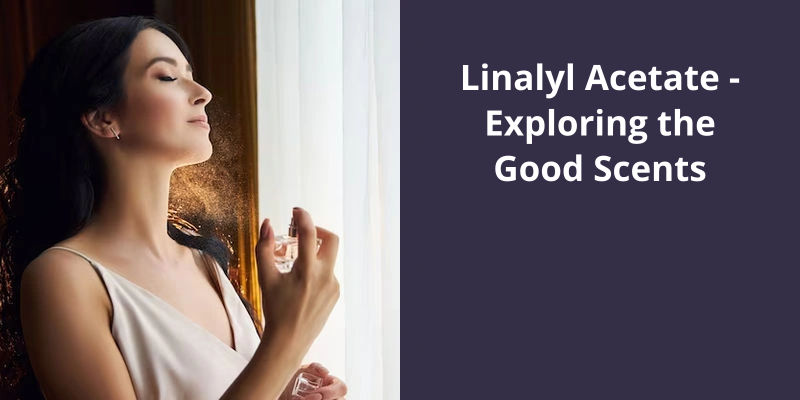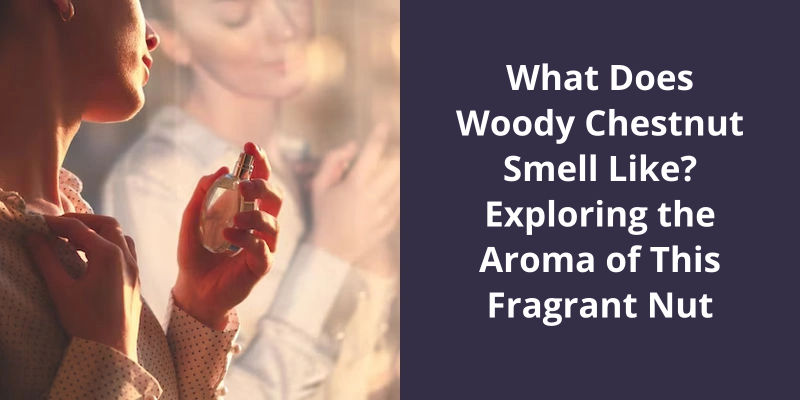Linalyl Acetate is a naturally occurring chemical compound often used in perfumery and aromatherapy due to its pleasant floral aroma reminiscent of lavender. It is a key component in many essential oils, including lavender, bergamot, and clary sage. In addition to its scent, Linalyl Acetate has been investigated for potential calming and anti-inflammatory properties, making it popular in various wellness and cosmetic products. Despite being naturally occurring, it must be used responsibly as some people may develop an allergic reaction to it.

What Is Linalyl Acetate in Cosmetics?
In cosmetics, Linalyl Acetate is primarily used as a fragrance ingredient due to it’s sweet and floral aroma. It’s often used in perfumes, soaps, lotions, and other personal care products to add a pleasant scent that appeals to a large range of consumers.
However, some people may be sensitive to linalyl acetate and experience an allergic reaction. To avoid this, companies must include it in the ingredient list on their products labels, as required by regulations. Consumers with allergies and sensitivities should always read product labels and avoid using products that contain linalyl acetate or any other ingredients that may trigger a reaction.
It can be found in fabric softeners, detergents, and even air fresheners. Additionally, it’s antimicrobial properties that can help to keep fabrics and surfaces clean and hygienic.
Synthetic fragrance ingredients are often criticized for their potential health and environmental hazards. However, linalyl acetate is considered safe when used in cosmetics and other products at appropriate concentrations. It’s also biodegradable, meaning that it breaks down naturally in the environment over time.
It’s sweet and floral aroma with strong lavender and bergamot notes is a popular choice among consumers. While it can cause an allergic reaction for some, it’s generally considered safe when used appropriately and is environmentally friendly due to it’s biodegradability.
What Are the Sources of Linalyl Acetate in Cosmetics and How Is It Extracted?
Linalyl acetate is a common fragrance ingredient in cosmetics, and it can be sourced from plant extracts such as lavender or bergamot. It’s extracted using various methods including steam distillation or solvent extraction.
Essential oils have been used for various purposes, including aromatherapy, skincare, and culinary arts for centuries. Among the countless phytochemicals that make up essential oils, linalyl acetate is one of the most widely used. This flavouring ingredient is commonly found in the essential oils of many flowers and spice plants, and two of the most popular sources are bergamot and lavender. In this article, we will explore the properties and benefits of linalyl acetate and the essential oils that contain it.
What Essential Oils Contain Linalyl Acetate?
In addition to bergamot and lavender, linalyl acetate can also be found in essential oils extracted from plants such as clary sage, lemon, rosewood, and ylang-ylang. These essential oils are commonly used in aromatherapy and perfumery due to their calming and relaxing properties.
Linalyl acetate is often used in the fragrance industry due to it’s pleasant floral aroma. It’s also used in many cosmetic and personal care products such as lotions, shampoos, and soaps, as well as in cleaning products and air fresheners.
The amount of linalyl acetate present in essential oils can vary depending on the method of extraction, the type and age of the plant, and the part of the plant from which the oil is extracted. For example, essential oils extracted from the flowers of lavender typically have a higher concentration of linalyl acetate than those extracted from the leaves.
Studies have shown that linalyl acetate has a variety of potential health benefits. It’s been found to have anti-inflammatory, antifungal, and insecticidal properties, and it may also have anxiolytic effects, meaning it can help to reduce anxiety and promote relaxation.
However, it’s important to note that essential oils should always be used with caution, as they can be highly concentrated and may cause skin irritation or other adverse effects if used improperly. It’s recommended to dilute essential oils in a carrier oil before using them on the skin, and to avoid using them internally unless under the guidance of a trained professional.
Now that we know more about the characteristics and uses of Ethyl Linalyl Acetate, it’s important to understand where it comes from and how it’s used in the fragrance industry. One company that’s been at the forefront of using this ingredient is Good Scents Company, known for their high-quality and innovative fragrances. Let’s take a closer look at how Ethyl Linalyl Acetate fits into their unique scent profiles.
What Is Ethyl Linalyl Acetate the Good Scent Company?
Ethyl Linalyl Acetate is a unique chemical compound that offers a perfect blend of floral and bergamot notes that are ideal for use in a range of personal care and cosmetic products. This remarkable compound is used extensively by top fragrance and flavor companies around the world who’re looking to create exquisite scents for their customers.
The Good Scent Company is one of the leading companies that specialize in the production of ethyl linalyl acetate. This company is committed to offering high quality and innovative fragrance solutions that meet the needs of their customers.
One of the reasons why The Good Scent Company is so highly regarded is because of their commitment to sustainable practices. They’re dedicated to using only the highest quality raw materials and ingredients that are sourced from ethical and environmentally sustainable suppliers. This ensures that their products aren’t only of the highest quality but are also safe and sustainable.
The fragrances developed by The Good Scent Company are known for their unique and captivating scents that linger on the skin for hours. Whether you’re looking for a fresh and floral scent or something more musky and masculine, The Good Scent Company has a fragrance that will meet your needs.
So why wait?
The Manufacturing Process of Ethyl Linalyl Acetate
- Raw materials are sourced and delivered to the manufacturing facility.
- The raw materials are mixed and processed in a reactor vessel.
- Chemical reactions occur within the reactor vessel, producing intermediate compounds.
- The intermediate compounds undergo further processing steps, such as distillation or filtration.
- The final product, Ethyl Linalyl Acetate, is extracted and packaged for distribution.
It’s interesting to note that linalyl acetate can be found in various organisms, including some plants and essential oils. Cardamom, Xylopia aromatica, and Citrus tankan are just some of the sources where this natural product can be found. It’s worth exploring how these natural sources contribute to the extraction and isolation of linalyl acetate.
Where Does Linalyl Acetate Come From?
One of the most significant sources of linalyl acetate is Xylopia aromatica, a plant that’s native to Africa, particularly in the regions of Madagascar, East Africa, and Mauritius. Also referred to by it’s common name, the African pepper, Xylopia aromatica is a small tree that produces dark red berries that are used frequently in traditional medicine due to it’s potent therapeutic properties. These berries are processed, and the essential oil extracted from them contains high levels of linalyl acetate, which has a wide range of potential applications in the cosmetics and fragrance industries.
Another noteworthy source of linalyl acetate is Citrus tankan, which is a type of citrus fruit that’s typically grown in Japan and western China. The fruit is oval-shaped and has a bright orange rind. The essential oil from the rinds contains significant amounts of linalyl acetate, which gives the fruit it’s characteristic citrus aroma. Citrus tankan has been cultivated for many years, and it’s rinds are frequently used in the production of various household products, including cleaning agents and air fresheners.
Linalyl acetate is also found in cardamom, which is a spice that’s commonly used in Asian cuisine, particularly in India and Iran. Cardamom is derived from the seeds of various plants in the ginger family and possesses a unique, somewhat spicy flavor. The essential oil extracted from cardamom seeds contains high levels of linalyl acetate, which accounts for it’s sweet, floral scent. Cardamom essential oil has a wide range of potential applications, including in the production of perfumes, soaps, and lotions.
In addition to the aforementioned sources, linalyl acetate can be isolated from a wide variety of plants and essential oils, including clary sage, lavender, and lemon. Clary sage, for example, is a perennial herb that’s native to the Mediterranean region. It’s essential oil is commonly used in aromatherapy due to it’s calming properties and contains significant amounts of linalyl acetate, which gives it it’s distinctive, earthy aroma. Similarly, lavender essential oil, which is derived from the flowers of the lavender plant, contains high levels of linalyl acetate, which gives it it’s soothing, floral scent.
It’s unique scent makes it a popular ingredient in numerous household and personal care products, including perfumes, soaps, and lotions. The various sources of linalyl acetate make it’s production an important aspect of the pharmaceutical and flavor industries, and research into it’s potential therapeutic properties is ongoing.
Uses and Benefits of Linalyl Acetate in Aromatherapy and Natural Remedies
Linalyl acetate is a natural compound found in certain essential oils. It’s commonly used in aromatherapy and natural remedies due to it’s calming and soothing properties. Some of the benefits of using linalyl acetate include stress relief, anxiety reduction, and improved sleep quality. It’s also believed to have anti-inflammatory and antioxidant properties, making it a popular ingredient in skincare products.
Conclusion
It’s fruity, floral, and sweet aroma makes it a popular choice as a base note in perfumes, soaps, and cosmetics, while it’s natural insecticidal properties also make it a valuable ingredient in bug sprays, candles, and diffusers. Moreover, linalyl acetate's antimicrobial and anti-inflammatory properties have also been recognized for their potential therapeutic properties in aromatherapy and pharmaceutical formulations.





